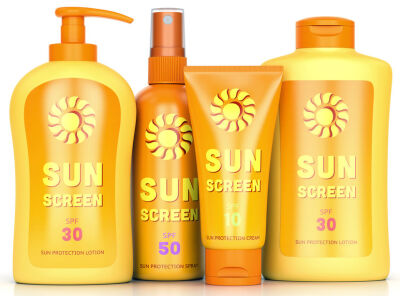METRO DETROIT — With summer officially here and in full swing, more opportunities exist to soak up the sun’s rays and boost serotonin levels.
According to Dr. James Forshee, the chief medical officer at Priority Health, skin cancer is the most common cancer in the U.S., and one in five Americans by age 70 will have had it.
Forshee explained that there are three kinds of skin cancer — basal cell carcinoma, squamous cell carcinoma and melanoma, emphasizing that the vast majority of skin cancers are benign, with melanoma being the more rare cancer and the malignant form.
“They’re caused, basically, by damage to cells that then causes the DNA to react abnormally, and then the cells grow abnormally. The most common form of damage in America is absolutely related to the sun and tanning beds,” Forshee said.
The sun’s ultraviolet rays are invisible to the human eye, yet can elicit a violent response from the skin when damaged. Forshee clarified that ultraviolet A, or UVA, are the rays that cause more damage to the deeper layers of skin, the dermis and the eyes, which can lead to premature aging and skin cancer.
The ultraviolet B, or UVB, rays damage the higher layer of the skin, the epidermis, which causes sunburn, and the cornea in the eyes, and it can also lead to skin cancer,
“The bright red color of a sunburn is actually the response that the cells have to the damage that has been done,” Forshee said. “Cells can sometimes turn into a tan, or if they’re damaged badly enough, they’ll end up sloughing off, and that’s that peeling effect of sunburn that people can get.”
Forshee shared some common myths when it comes to sun protection.
One of the most common misconceptions is that getting a sunburn on a cloudy day or in the shade is impossible. However, ultraviolet rays come through the clouds and can be reflected off of sand, water, grassy surfaces, trees and snow in the wintertime, which is why it is important to wear sunscreen all year round. Another myth Forshee shared is that while UVA and UVB can penetrate quickly and cause damage faster to fair-skinned people, individuals with dark skin can also get sunburnt and damaged by the sun.
Another myth Forshee addressed was that the higher the SPF, or “sun protection factor,” in a sunscreen, the better it is.
“That’s just not true. You would think that if you use a sunscreen that’s 50 that when you then use a sunscreen that’s 100, it’s twice as effective. It’s not. So, for example, an SPF of 30 blocks about 97% of the sun rays, and an SPF of 50 blocks about 98%. It’s only a 1% increase, and a 100 (SPF) blocks about 99%. Using a 30 factor or more is what you need to do.”
Dr. Henry W. Lim, the former chair of Henry Ford Health’s Department of Dermatology, shared tips on protecting against sun damage and skin cancer.
Lim advised that, if you are working outdoors, it is best to stay in the shade as much as possible. He also recommended wearing sun-protective clothing, which he added is “very comfortable, quite stylish and very lightweight.” Sun-protective clothing is tightly woven, so little sunlight gets through the material; some are treated with chemical sunscreens. He also suggested wearing a wide-brimmed hat, as a baseball cap alone is not sufficient and offers less coverage. Lim explained that most sunglasses have UV protection that helps prevent cataract formation from too much sun exposure.
According to Lim, applying sunscreen of 30 SPF or higher 20 minutes before sun exposure is crucial, especially in the early afternoon. He recommends FDA-approved sunscreens and advises that mineral sunscreen might be a better alternative for those who are looking to avoid using a chemical sunscreen. Lim stated there is controversy surrounding chemical sunscreens as studies have shown that they can enter the bloodstream through the skin. Additionally, some states, like Hawaii, have prohibited their use to protect the coral reefs. Mineral sunscreens contain titanium dioxide and zinc oxide, which are naturally occurring minerals. However, the only drawback to mineral sunscreens is that for darker-skinned people, it leaves a white film after application.
Lim emphasized the importance of spending time outdoors while also protecting against sun damage.
“In the afternoon, the peak of the ultraviolet B rays coming through the surface of the earth is between 10 a.m. to 2 p.m.,” Lim said. “That’s when most sunburns would likely develop, because it takes a shorter period of time to develop a sunburn during this time compared to morning or evening.”
 Publication select ▼
Publication select ▼























